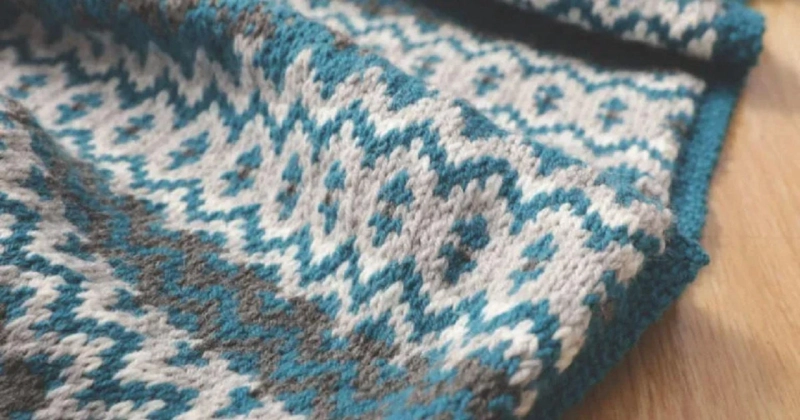You don't need much to start knitting, just wool and knitting needles and you're good to go. But with the following blog we would like to fill your knitting bag with valuable tips and tricks that will help you have a better knitting experience and thus improve your knitting. It's often the little things that make knitting easier.
01 Don't miscount anymore
Surely everyone knows that ... finally you start a new knitting project - e.g. a blanket - and you should cast on e.g. 250 stitches. At the latest after the first 50 stitches I miscount because I am interrupted or distracted. Then the counting starts – maybe if you were already at 128 stitches, start again from the beginning. This is very annoying! There is a very simple trick to avoid this. Cast on 20 stitches at a time and insert a stitch marker. You will find many colorful stitch markers in our range, which will definitely make knitting easier for you. Because these are not only practical when turning them on, you can also mark the beginning of the round or, in the case of large projects, delimit certain areas that are important to mark.
02 Collect knit gauges
Nobody likes to knit gauges. And certainly not every time extra for each project and with each type of wool. But there is a very simple trick so that you can save yourself the stitch test every now and then. To do this, simply knit stitch samples with your favorite types of yarn and different needle sizes and create a folder. Write down which wool you have used, color number, needle size, etc. This can also make it easier for you to decide in advance on the wool and Knitting needle selection for your next project.
03 Install Safety Line
For larger and particularly complex patterns, I recommend a safety line from time to time ... i.e. pulling in a rescue thread. I think everyone has experienced it before, knitting a grandiose, very complex pattern and only realizing rows later that you have made one or more mistakes. Then it's time to knit everything back once and that takes a lot of time - especially when yarn overs, cables and other stitch combinations come together (particularly popular with lace knitting). Nerve wracking! You want to knit forwards and not backwards. Pulling out the needles completely and unraveling them is also very difficult or sometimes even impossible with some patterns. For a safety line I take a different colored thin wool thread and thread it with a needle through all active stitches that are currently on the needle. Thus, all stitches are now on the needle or also on the "rescue thread". In the next row you only have to make sure that only the wool of your knitted piece is knitted and not the "rescue thread". Now you can continue knitting happily. If a mistake then creeps in, there is no need to spend hour’s back-knitting or catching stitches.
Because of the safety line, the needle can simply be pulled out and everything can be unraveled up to the rescue thread. Here, the drawn-in thread can no longer be unraveled automatically. Now put the stitches back on the needle along the safety line and you can continue knitting. Sure, you have to rub, but only up to the rescue thread.
04 Write a knitting diary
Write down notes about your knitting projects, such as which yarn you used, which needle size, information about the stitch test and, if necessary, the conversion or what changes you made if you knitted according to a pattern. This helps, for example, if you want to repair the knitted piece after a certain time or want to knit something again, so you have the most important information together. It's also a nice reminder and a little trophy diary of everything you've already knitted
05 Secure knitting needles
The needles should be secured to prevent the stitches from "slipping down" or a whole needle from slipping out. There are chic "needle boxes" for this ... but the needles can also be held together with a simple rubber band. To do this, the rubber bands are simply looped around the needles several times at the end of the needles. This works with double point knitting needles, single pointed needles but also circular knitting needles.
“There is no doubt that creativity is the most important human resource of all. Without creativity, there would be no progress, and we would be forever repeating the same patterns.”- Edward De Bono
Do You Like this Knitterspride Blog? Click here for more Knitterspride Blogs like this.
0


